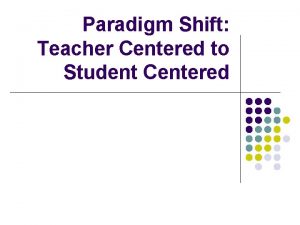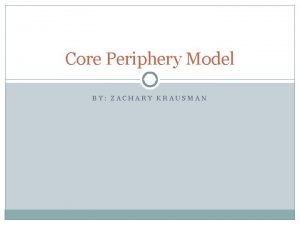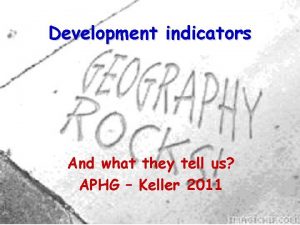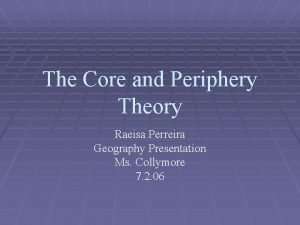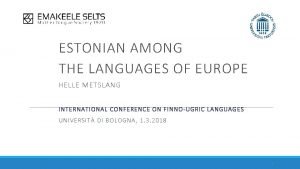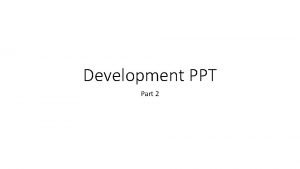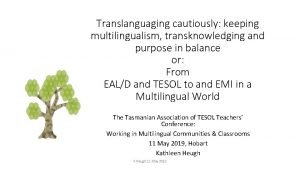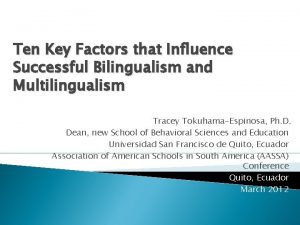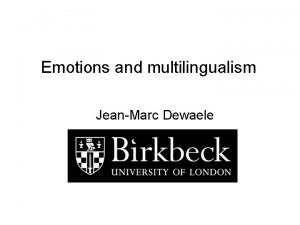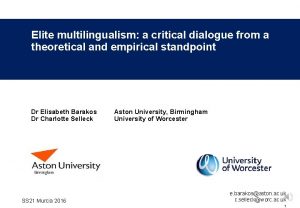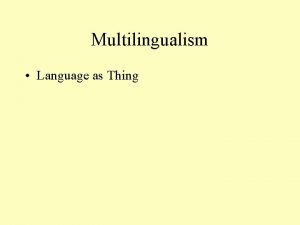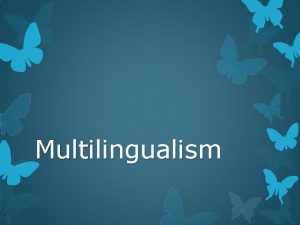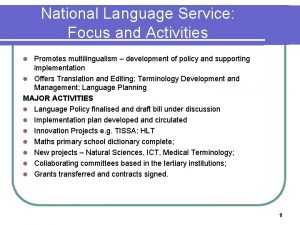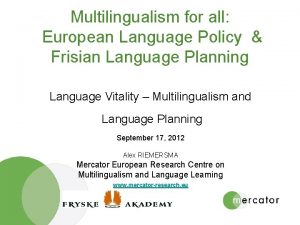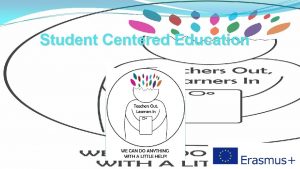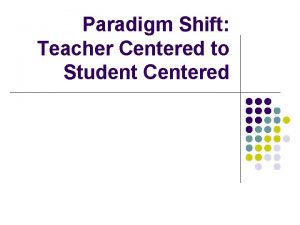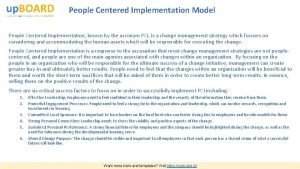Multilingualism at the periphery Language centered activities in

















- Slides: 17

Multilingualism at the periphery: Language centered activities in zones of educational priority EFNIL- British Council, London 2011 Marilena Karyolemou – Maria Maglara University of Cyprus – Kings College

How multilingualism is locally constructed: the perspective of the periphery In discussions about the multilingual future of Europe, • we usually tend to forget that a part of the potentially bi/multilingual people in each European country, have recently arrived to a European country and are engaged in an intense ongoing negotiation in order to become citizens of Europe: immigrants and especially immigrant children The term “multilingualism at the periphery” refers to, • geographically peripheral E. U. member states like Cyprus that became host countries recently • some aspects of potential bi/multilingualism are differently conceived, locally constructed and lived at the periphery In this process it is extremely important to be able, • to seek ways to fully engage immigrant people in social practices in both languages, • to help them acquire multiple linguistic & social skills in order to equally negotiate their integration in the European social space London EFNIL 2011

Multilingualism in Cyprus Although traditionally Cyprus has been a multilingual country with: • Two official languages • English in a prominent position • Three minority languages: Armenian, Cypriot Arabic, Kurbetcha • Two varieties of the same language • Standard Modern Greek vs Cypriot dialect • Standard Turkish vs Cypriot Turkish New forms of multilingualism with new languages result from a significant influx of immigrants since the last decade of the 20 th century London EFNIL 2011

Immigration statistics: increasing rates The number of immigrants increases since the 90 s due to a relaxation of legislation in order to overcome labour shortages Russia Latvia Germany Poland Slovakia Ukraine Romania Bulgaria Greece London EFNIL 2011

Language in education policies Mainstream education largely monolingual Foreign language teaching policy • remains attached to major European languages & provides limited options • 1 st & 2 nd foreign languages taught are mandatorily English and French • limited options for the last two years for upper high school (Turkish introduced in 2004, Russian in 2006) • no minority languages or languages of a local interest, such as Armenian or Cypriot Arabic • no languages of interest for the wider region, such as Arabic or Hebrew No place for immigrant languages The educational system has difficulties to adjust to the new needs of non-Greek speaking immigrant children enrolled in public education • teaching of Greek as a foreign/second language • making a space for immigrant languages London EFNIL 2011

Immigrant children in public schools: the statistics We have currently 12% of immigrant pupils in the primary, app. 5% in the secondary (both general and professional cycles) London EFNIL 2011

Dealing with immigrant children in public education 2001 -2 and more systematically since 2003: Action plan mainly targeting schools in areas of high concentration of immigrant children (zones of educational priority or ZEPs) • to cover the whole range of educational levels, pre-primary, primary and secondary • to be gradually implemented (initially 3 now 27 schools) Aims: • to build up language-friendly school communities • to prevent school failure and early abandonment of school • to prevent adolescent criminality • to reinforce social integration and cohesion Faneromeni School in Nicosia London EFNIL 2011

The Faneromeni school: profile (founded in 1857) • Initially a school only for girls, open to boys since 1976 • Operating as Teachers’ Training School 1903 -24, as a secondary school from 1933 -76, as pre-primary, primary and secondary since 1924 • Situated in Nicosia intra muros (old city) • Area adjacent to the Green line, with a heavily immigrant resident population • Pupil population reverted from purely Cypriot to predominantly immigrant • Decrease of overall number of pupils London EFNIL 2011

Educational policy for immigrant children To get mainstream and bilingual/ foreign pupils appreciate multilingualism. To get them participate in multilingual and multicultural practices To enhance bilingual/ foreign pupils’ competence in the standard language To empower all students through their participation in different social practices, in order to help them become social beings with competent skills of negotiating their social status To get their parents involved in everyday activities with their children. Some actions such as learning how to use computer were addressed both to the pupils and their parents As a result of the aforementioned points, to diminish increasing numbers of school failure mainly with reference to bilingual/ foreign pupils activities integrated in the curriculum during the official school time, but also participation of pupils in extra-curricular activities London EFNIL 2011

Voices in the classroom Pupils were allowed to use their native language throughout the program Ø Ø Trilingual teaching assistant in Georgian, Russian & Greek offering in-class translation to pupils with no knowledge of Greek Ø teaching Greek as a second language to intermediate level pupils Ø providing occasional language assistance for advanced pupils Ø According to the teaching assistant, pupils acquired the skill of reading within 1 or 2 lessons (without though understanding yet the content of the text they were reading). They were then supported in the acquisition of vocabulary and grammar London EFNIL 2011

Multiple literacy practices – multiple language input – multiple social cohesion Acquisition of multiple literacy practices • Digital literacy - learning how to use ICT, how to edit videos Multiple language input from extra-curricular activities and now how • Put together a questionnaire about the architectural style of old buildings, conduct interviews of employees at the urban planning bureau, produce a text for a documentary Multiple social participation • Immigrant children are not just accepted or tolerated but actively engaged in social activities along with different participants (parents, fellow pupils, teachers, professionals) completing a multitude of social tasks London EFNIL 2011

Participation of immigrant students in multilingual social practices at school Drama workshops All pupils were encouraged to articulate utterances in their mother tongue, then repeated throughout the workshop by other members of the team In the course, a play was composed out of the verbal and other semiotic interaction (such as pantomime) of the pupils. One of the teachers put together pupils’ thoughts on what it means to be an adolescent The pupils were invited to communicate some of their thoughts in their mother tongues Pervin: “Life is difficult; I am not easy either” A 15 years old immigrant from Turkey, only a few months in Cyprus She used to keep a diary in her mother tongue With the support of one of the teachers, she edited her diary, by putting together thoughts in a flowing text like small essays She translated it into Greek and got it published in both Greek and Turkish London EFNIL 2011

London EFNIL 2011

London EFNIL 2011

London EFNIL 2011

Benefits – Good practice Immigrant children have the chance to introduce their mother tongues in a predominantly monolingual school Mainstream students become increasingly aware of linguistic andcultural diversity, learn to show respect to bilingual/multilingual pupils’ mother tongues and culture Students, teachers, parents & professionals engaged in intense, multilateral linguistic and social activities that empower immigrant children: - by helping them achieve better standards of command of the Greek language - by getting them to acquire different genres and learn how different social activities are structured (interviews, questionnaires, diaries etc. ) - by engaging them in social practices which helped them acquire social skills necessary to integrate the Cypriot society London EFNIL 2011

So …. ? In language teaching, we have to act locally we have to have an integrative approach that takes into account linguistic resources and linguistic needs Is there anything we can learn from our example that could be useful for language education or foreign language education? language learning is implicit needs to be socially embedded Language is a social thing and unless language teaching takes into consideration this fact and re-places language in its social ground, language teaching will remain ineffective and will continue to produce poor results London EFNIL 2011
 Types of societal multilingualism
Types of societal multilingualism Paradigm shift teacher-centered to student-centered
Paradigm shift teacher-centered to student-centered Which of the following is true concerning hurricanes?
Which of the following is true concerning hurricanes? Core periphery model
Core periphery model Backwash effects definition ap human geography
Backwash effects definition ap human geography Structuralist theory aphg
Structuralist theory aphg Friedman's core periphery model
Friedman's core periphery model European periphery
European periphery Distance decay example ap human geography
Distance decay example ap human geography Wallerstein's world systems theory
Wallerstein's world systems theory Myrdal model
Myrdal model Horizontal multilingualism
Horizontal multilingualism Factors responsible for bilingualism and multilingualism
Factors responsible for bilingualism and multilingualism Emotions and multilingualism
Emotions and multilingualism Elite dialogue
Elite dialogue Operating activities vs investing activities
Operating activities vs investing activities Indoor or outdoor sports
Indoor or outdoor sports Support activities and primary activities
Support activities and primary activities

